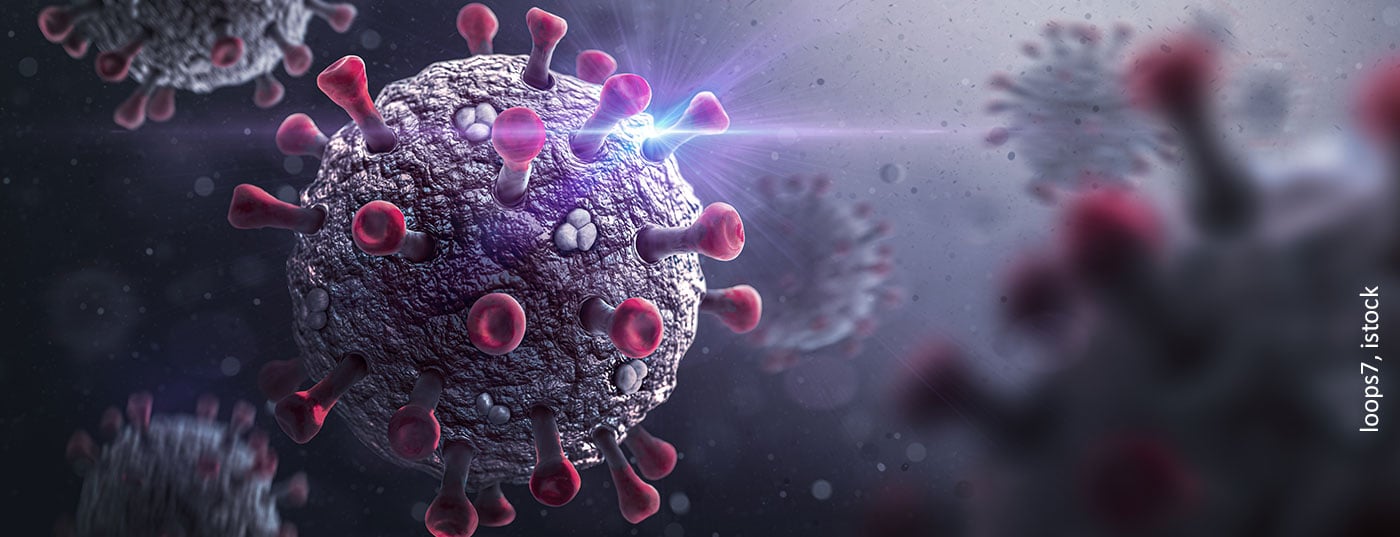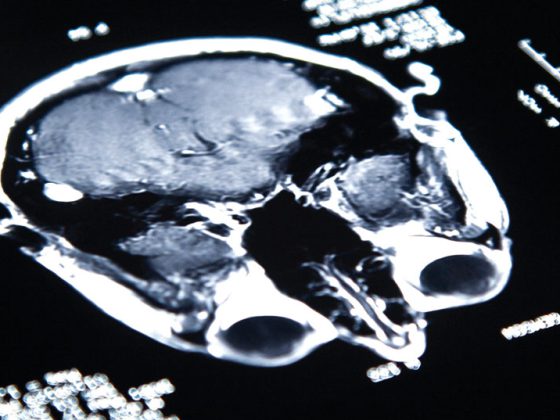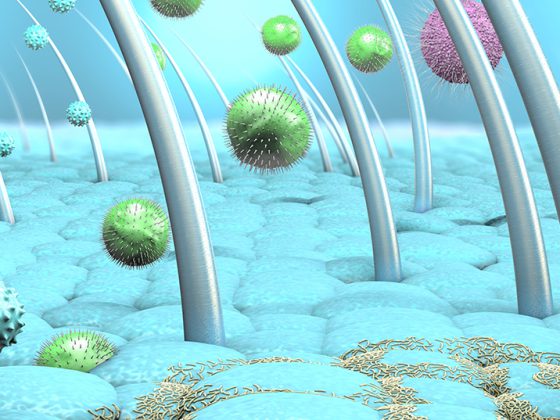The bacterial lysate OM-85 induced downregulation of ACE2 and TMPRSS2 – two enzymes highly relevant to SARS-CoV-2 infection – in vitro in human epithelial tissue of target organs of the novel coronavirus. This was found by a U.S. research group in a laboratory-based study published in the Journal of Allergy and Clinical Immunology .
SARS-CoV-2 binds to the cell surface receptor ACE2 (“angiotensin-converting enzyme”) with the help of the spike protein. This enzyme is found in high density in lung tissue. Coronavirus is introduced into the cell either by endocytosis or by transmembrane serine protease 2 (TMPRSS2)-mediated fusion of the viral envelope with the cellular membrane. The ACE2 receptor as the linchpin of SARS-CoV-2 infection is the starting point for an intervention strategy using the bacterial lysate OM-85.
in vitro findings: OM-85 inhibits SARS-CoV-2 in human lung epithelium
A research team from the University of Arizona (USA) led by Prof. Donata Vercelli and Prof. Vadim Pivniouk has been investigating whether treatment with the bacterial lysate OM-85 can affect the ACE2 receptor in covid-19 since the outbreak of the corona pandemic based on data from asthma prevention studies [1]. The idea is that the entry port is displaced from the cell wall so that the virus cannot attach to any structure (Fig. 1). OM-85 (Broncho-Vaxom®) is an immunostimulant in capsule form that is approved in Switzerland for the preventive treatment of upper respiratory tract infections [2].
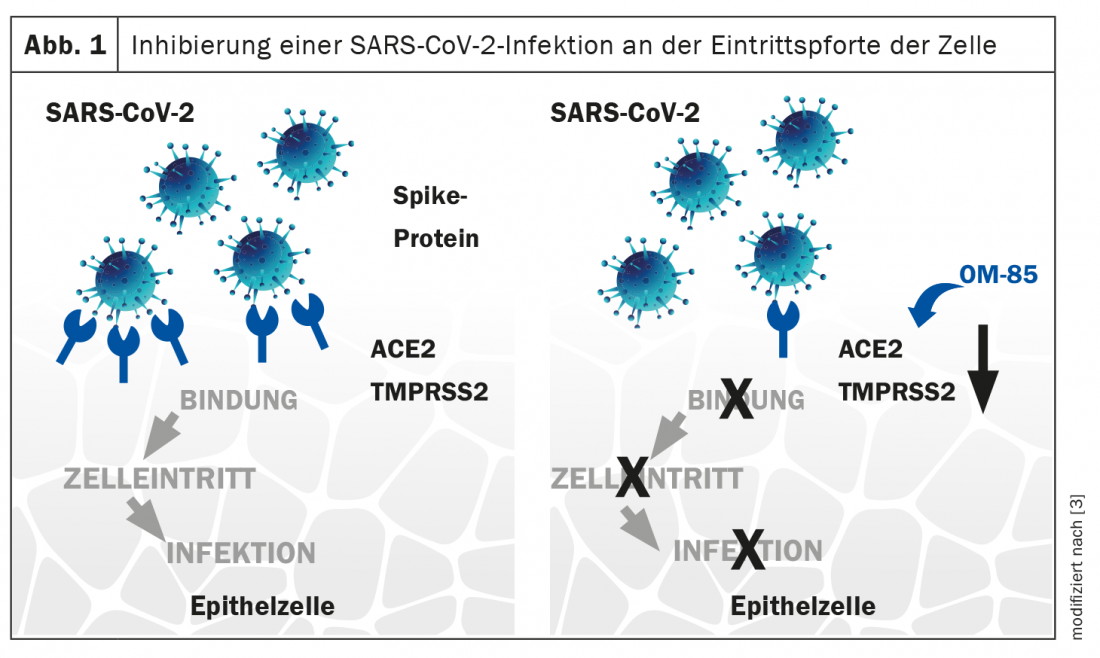
Cells of the human lung epithelium are a target of SARS-CoV-2, which is why researchers directed a focus on it [3]. Bronchial epithelial cells were isolated from a healthy human and cultured on cell culture inserts with polyester membrane at the air-liquid interface for the period of 2 weeks. After 48- or 72-hour preincubation with phosphate-buffered saline (PBS) or OM-85 (1.92 mg/ml), mRNA levels of ACE2 and TMPRSS-2 were measured by RT-quantitative PCR. Significant inhibition of ACE2 was seen after 48 h and after 72 h (p=0.01 and p=0.005, respectively), while significant inhibition of TMPRSS2 was seen only after 72 h (p=0.04) [3] (Fig. 2) .
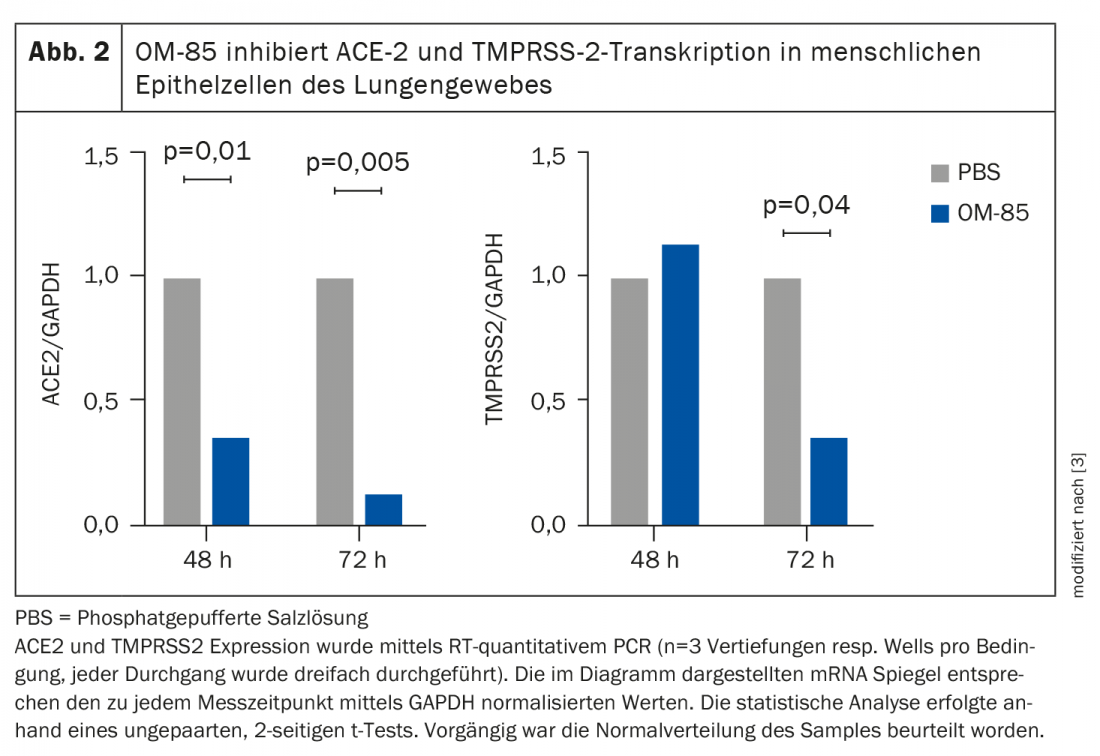
In a next step, we analyzed whether reduced SARS-CoV-2 receptor transcription was associated with reduced levels of the receptor protein on the cell surface. Vero E6 and Calu-3 cells were pre-incubated with PBS or OM-85 (0.48 and 1.92 mg/ml) for 72 h and analyzed by flow cytometry [3]. OM-85 treatment significantly and dose-dependently reduced both the mean fluorescence intensity of ACE2 and the percentage of ACE2-positive cells of both cell lines. Further analysis showed that OM-85 can also inhibit SARS-CoV-2 infection in vitro in epithelial cells of other tissues, such as kidney tissue [3].
Literature:
- “Respiratory Tract Bacterial Extracts Could Prevent COVID-19, Study Finds,” The University of Arizona, 12/13/2021.
- Drug Information, www.swissmedicinfo.ch (last accessed Feb. 28, 2022).
- Pivniouk V, et al: Allergy Clin Immunol 2021 Dec, doi: 10.1016/j.jaci.2021.11.019.
HAUSARZT PRAXIS 2022; 17(3): 28
InFo PNEUMOLOGY & ALLERGOLOGY 2022; 4(2): 37.

